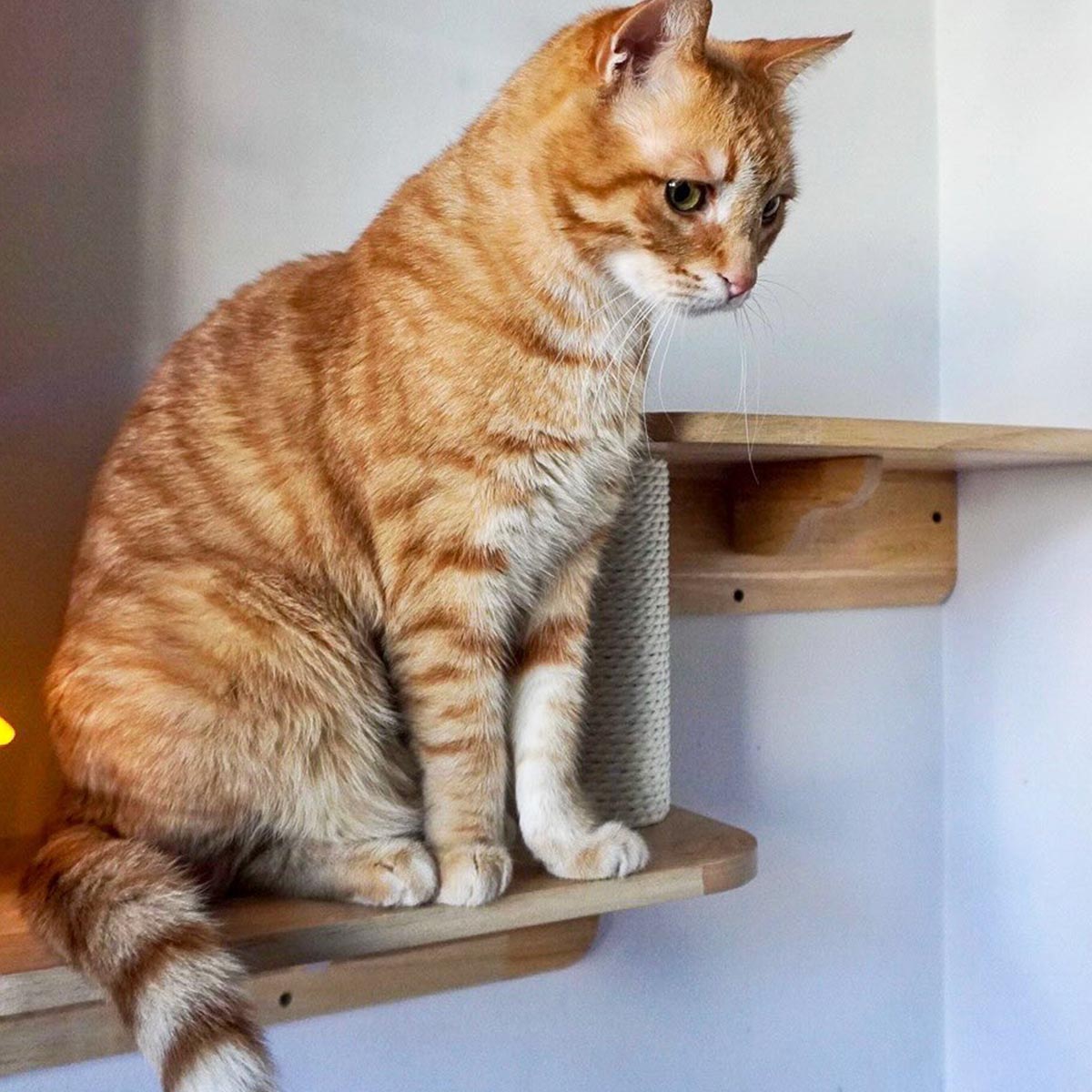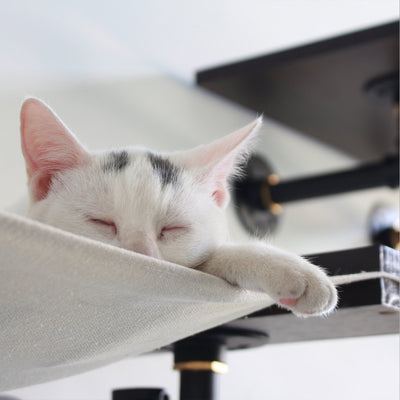The amount and frequency of meals depends on your cat's age, health and preference.
Check the pet food aisle at your local supermarket, and you'll find dozens of varieties of food to entice your cat. If you feed your cat too little or the wrong kind of food, he will lose weight and runs the risk of developing serious health issues (i.e. hepatic lipidosis, a potentially life-threatening condition characterized by excessive fat accumulation the liver). Feed him too much, and he will likely become overweight. You can help get your cat off on the right paw by establishing regular feeding routines. Although the food you feed your cat should be complete and balanced, the simple answer to how often you should feed him is that there isn't a simple answer.
Age makes a difference
Kittens require more food per pound of body weight to support their growth than do adult cats, and therefore should be fed more often throughout the day. Until they are six months old, kittens will usually do best when fed three meals a day. Between the ages of six months and one year, twice daily feeding is generally best.
Once the cat becomes an adult, at about one year of age, feeding once or twice a day is appropriate in most cases. Senior cats (10 years of age and older) should maintain the same feeding regimen unless owners are otherwise instructed by a veterinarian.
The health of your cat matters
Cats that suffer from certain diseases may benefit from having their diet modified. Diabetic cats, for example, should ideally be fed a diet that is moderately restricted in carbohydrates, while cats suffering from advanced chronic kidney disease (CKD) should usually be fed a protein and phosphorus-restricted diet.
Cat that suffer from periodontal disease (which is very common) may find it difficult to chew dry food. If this is the case, offering wet food or dry food in a finer nugget size and/or water added to it may help.
Is there a best type of food?
The important thing is that a food is nutritionally complete and balanced, and there are many high-quality wet and dry cat foods that fulfill this requirement. While all cats should be provided with plenty of fresh water at all times, this is especially important for cats that eat only dry food, especially if they are prone to lower urinary tract disease.
Wet cat food is typically about 70 to 80 percent water, and can be fed in addition to or instead of dry. Some cats may find canned food more palatable, and they may consume too much if they are allowed free access to food. Of course, this may occur with dry food as well.
Super-sizing food portions is not just a problem for people. Since the feeding instructions on pet food labels are based on the needs of the average cat, you may be feeding more than necessary if your cat expends less energy per day than the average cat. Of course, cats that expend more energy than the average cat may require more calories to maintain good health. Dry food can also be supplemented with a small amount of wet food to make meals more appealing.
Free feeding dry food (keeping it available all the time, sometimes referred to as graze-feeding) may be acceptable for some cats, but for others, it can result in overeating and inappropriate weight gain. Importantly, owners should be sure that any food offered to their cats is fresh. A ny food left our for grazing, for example, should be replenished with new food every day.
And here's a useful hint: If you have a finicky cat, switching foods occasionally may help keep him from becoming hooked on only one diet.
Consider your schedule
How often you feed your cat may depend on your schedule as well. Mornings may be hectic as you get the kids off to school and yourself off to work. Under these circumstances, feeding your cat may be easier in the evening when it's quieter and less busy. If you are running around a lot in the evening, feed your cat in the morning before everyone else is up. Find a schedule that works for you and your cat - and then keep it consistent.
In a multi-cat household, not all cats automatically come when called for dinner, potentially making it difficult for some to get food unless it is left out all the time. Other cats may eat too much when food is always available. In some cases, feeding cats separately or in different parts of the house may be helpful.
This article originally appeared in CatWatch. It has been updated and edited since original publication.


